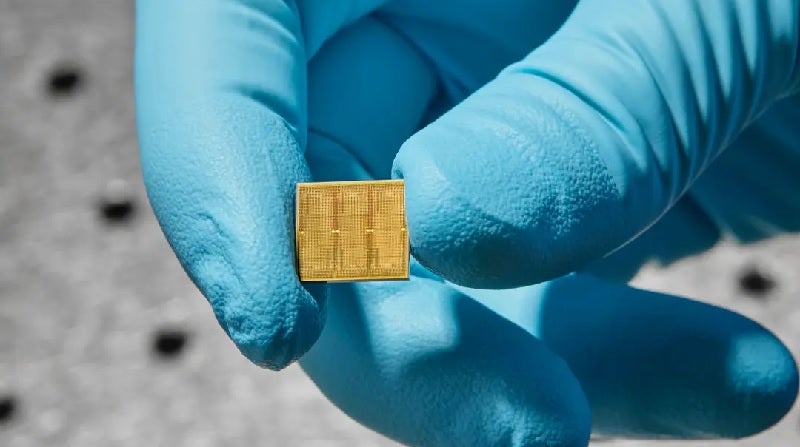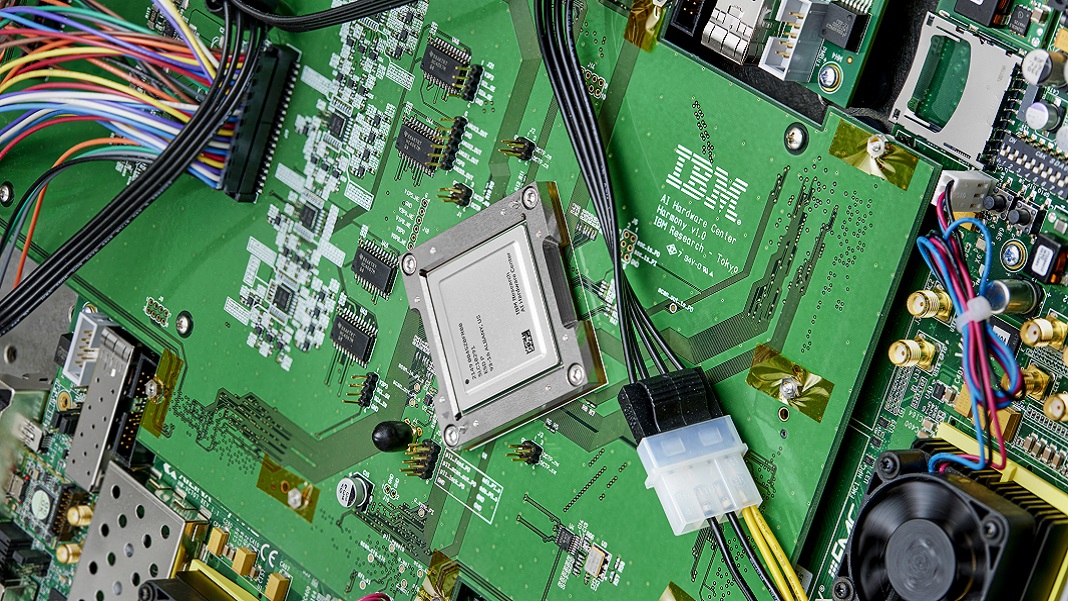ChatGPT, DALL-E, Steady Diffusion, and different generative AIs have taken the world by storm. They create fabulous poetry and pictures. They’re seeping into each nook of our world, from advertising to writing authorized briefs and drug discovery. They appear just like the poster youngster for a man-machine thoughts meld success story.
However below the hood, issues are trying much less peachy. These techniques are huge vitality hogs, requiring knowledge facilities that spit out hundreds of tons of carbon emissions—additional stressing an already risky local weather—and suck up billions of {dollars}. Because the neural networks turn into extra refined and extra extensively used, vitality consumption is more likely to skyrocket much more.
Loads of ink has been spilled on generative AI’s carbon footprint. Its vitality demand might be its downfall, hindering growth because it additional grows. Utilizing present {hardware}, generative AI is “anticipated to stall quickly if it continues to depend on commonplace computing {hardware},” mentioned Dr. Hechen Wang at Intel Labs.
It’s excessive time we construct sustainable AI.
This week, a research from IBM took a sensible step in that course. They created a 14-nanometer analog chip full of 35 million reminiscence models. Not like present chips, computation occurs straight inside these models, nixing the necessity to shuttle knowledge backwards and forwards—in flip saving vitality.
Knowledge shuttling can enhance vitality consumption anyplace from 3 to 10,000 occasions above what’s required for the precise computation, mentioned Wang.
The chip was extremely environment friendly when challenged with two speech recognition duties. One, Google Speech Instructions, is small however sensible. Right here, velocity is essential. The opposite, Librispeech, is a mammoth system that helps transcribe speech to textual content, taxing the chip’s capability to course of huge quantities of knowledge.
When pitted towards standard computer systems, the chip carried out equally as precisely however completed the job sooner and with far much less vitality, utilizing lower than a tenth of what’s usually required for some duties.
“These are, to our data, the primary demonstrations of commercially related accuracy ranges on a commercially related mannequin…with effectivity and large parallelism” for an analog chip, the workforce mentioned.
Brainy Bytes
That is hardly the primary analog chip. Nevertheless, it pushes the concept of neuromorphic computing into the realm of practicality—a chip that would someday energy your telephone, good residence, and different units with an effectivity close to that of the mind.
Um, what? Let’s again up.
Present computer systems are constructed on the Von Neumann structure. Consider it as a home with a number of rooms. One, the central processing unit (CPU), analyzes knowledge. One other shops reminiscence.
For every calculation, the pc must shuttle knowledge backwards and forwards between these two rooms, and it takes time and vitality and reduces effectivity.
The mind, in distinction, combines each computation and reminiscence right into a studio condominium. Its mushroom-like junctions, referred to as synapses, each type neural networks and retailer recollections on the identical location. Synapses are extremely versatile, adjusting how strongly they join with different neurons based mostly on saved reminiscence and new learnings—a property referred to as “weights.” Our brains rapidly adapt to an ever-changing atmosphere by adjusting these synaptic weights.
IBM has been on the forefront of designing analog chips that mimic mind computation. A breakthrough got here in 2016, once they launched a chip based mostly on an enchanting materials normally present in rewritable CDs. The fabric adjustments its bodily state and shape-shifts from a goopy soup to crystal-like buildings when zapped with electrical energy—akin to a digital 0 and 1.
Right here’s the important thing: the chip also can exist in a hybrid state. In different phrases, much like a organic synapse, the unreal one can encode a myriad of various weights—not simply binary—permitting it to build up a number of calculations with out having to maneuver a single bit of knowledge.
Jekyll and Hyde
The brand new research constructed on earlier work by additionally utilizing phase-change supplies. The essential parts are “reminiscence tiles.” Every is jam-packed with hundreds of phase-change supplies in a grid construction. The tiles readily talk with one another.
Every tile is managed by a programmable native controller, permitting the workforce to tweak the part—akin to a neuron—with precision. The chip additional shops a whole bunch of instructions in sequence, making a black field of kinds that enables them to dig again in and analyze its efficiency.
General, the chip contained 35 million phase-change reminiscence buildings. The connections amounted to 45 million synapses—a far cry from the human mind, however very spectacular on a 14-nanometer chip.

These mind-numbing numbers current an issue for initializing the AI chip: there are just too many parameters to hunt by way of. The workforce tackled the issue with what quantities to an AI kindergarten, pre-programming synaptic weights earlier than computations start. (It’s a bit like seasoning a brand new cast-iron pan earlier than cooking with it.)
They “tailor-made their network-training methods with the advantages and limitations of the {hardware} in thoughts,” after which set the weights for probably the most optimum outcomes, defined Wang, who was not concerned within the research.
It labored out. In a single preliminary take a look at, the chip readily churned by way of 12.4 trillion operations per second for every watt of energy. The vitality consumption is “tens and even a whole bunch of occasions larger than for probably the most highly effective CPUs and GPUs,” mentioned Wang.
The chip nailed a core computational course of underlying deep neural networks with only a few classical {hardware} parts within the reminiscence tiles. In distinction, conventional computer systems want a whole bunch or hundreds of transistors (a fundamental unit that performs calculations).
Discuss of the City
The workforce subsequent challenged the chip to 2 speech recognition duties. Each careworn a unique side of the chip.
The primary take a look at was velocity when challenged with a comparatively small database. Utilizing the Google Speech Instructions database, the duty required the AI chip to identify 12 key phrases in a set of roughly 65,000 clips of hundreds of individuals talking 30 brief phrases (“small” is relative in deep studying universe). When utilizing an accepted benchmark—MLPerf— the chip carried out seven occasions sooner than in earlier work.
The chip additionally shone when challenged with a big database, Librispeech. The corpus comprises over 1,000 hours of learn English speech generally used to coach AI for parsing speech and computerized speech-to-text transcription.
General, the workforce used 5 chips to ultimately encode greater than 45 million weights utilizing knowledge from 140 million phase-change units. When pitted towards standard {hardware}, the chip was roughly 14 occasions extra energy-efficient—processing practically 550 samples each second per watt of vitality consumption—with an error fee a bit over 9 p.c.
Though spectacular, analog chips are nonetheless of their infancy. They present “huge promise for combating the sustainability issues related to AI,” mentioned Wang, however the path ahead requires clearing just a few extra hurdles.
One issue is finessing the design of the reminiscence expertise itself and its surrounding parts—that’s, how the chip is laid out. IBM’s new chip doesn’t but include all the weather wanted. A subsequent vital step is integrating all the things onto a single chip whereas sustaining its efficacy.
On the software program aspect, we’ll additionally want algorithms that particularly tailor to analog chips, and software program that readily interprets code into language that machines can perceive. As these chips turn into more and more commercially viable, creating devoted purposes will preserve the dream of an analog chip future alive.
“It took many years to form the computational ecosystems by which CPUs and GPUs function so efficiently,” mentioned Wang. “And it’ll in all probability take years to ascertain the identical kind of atmosphere for analog AI.”
Picture Credit score: Ryan Lavine for IBM

